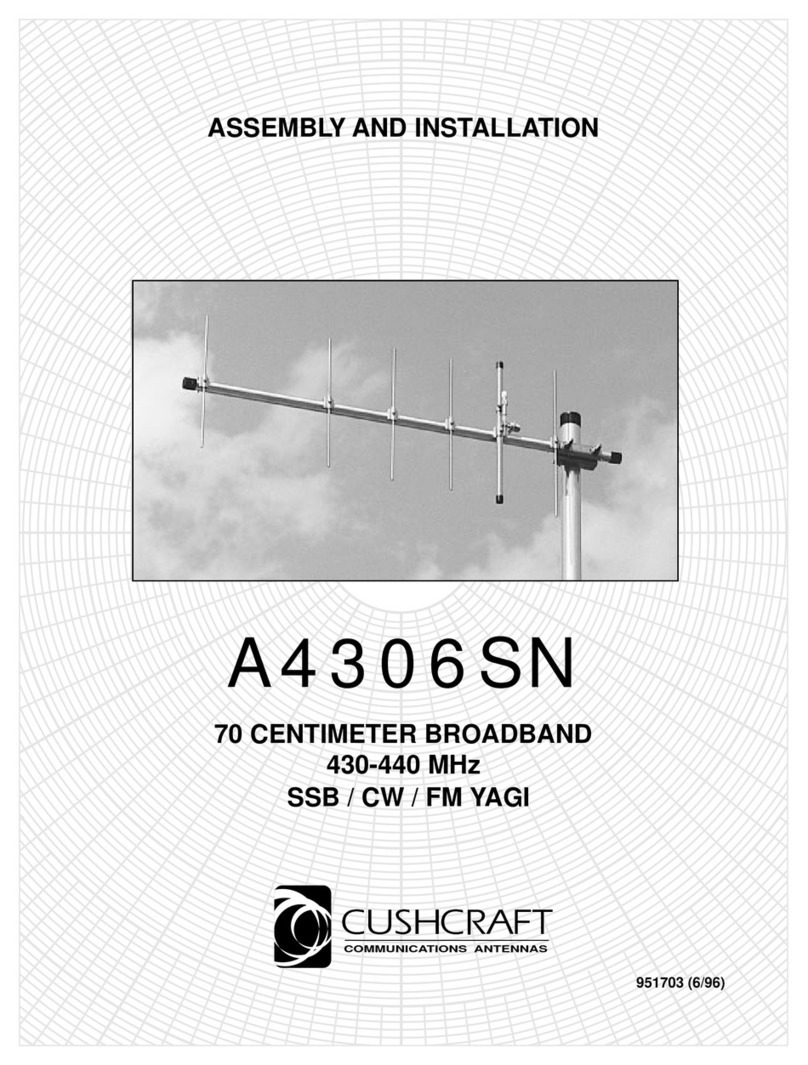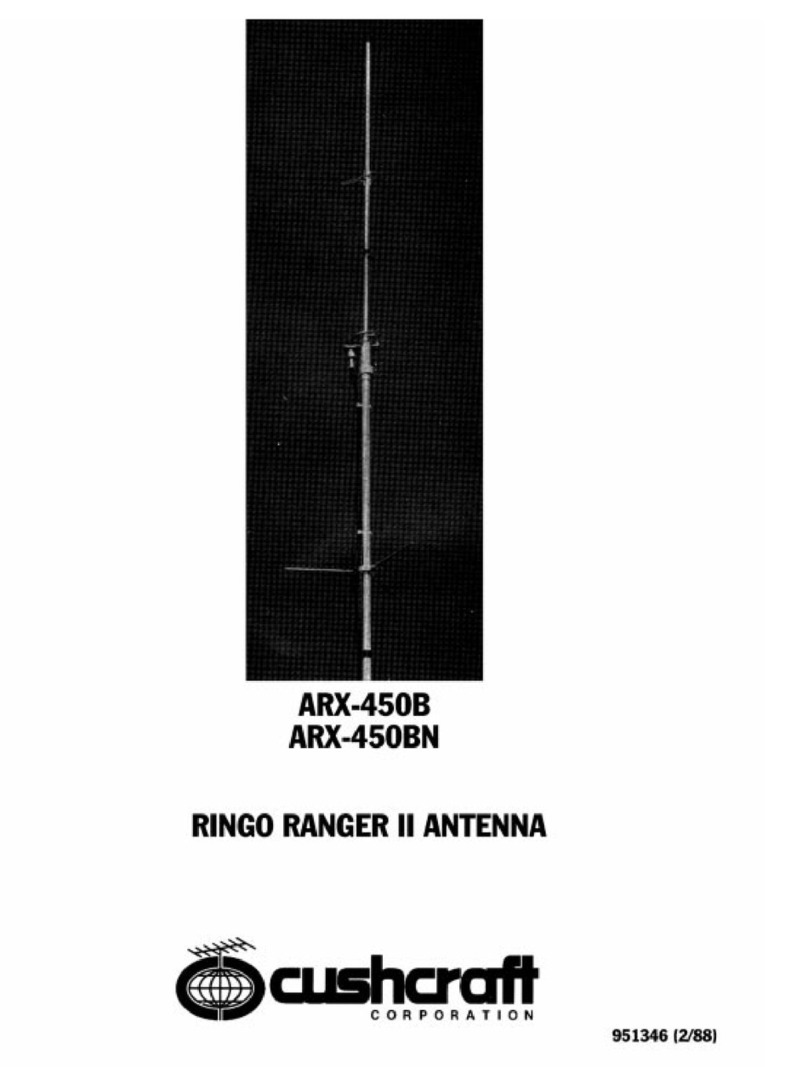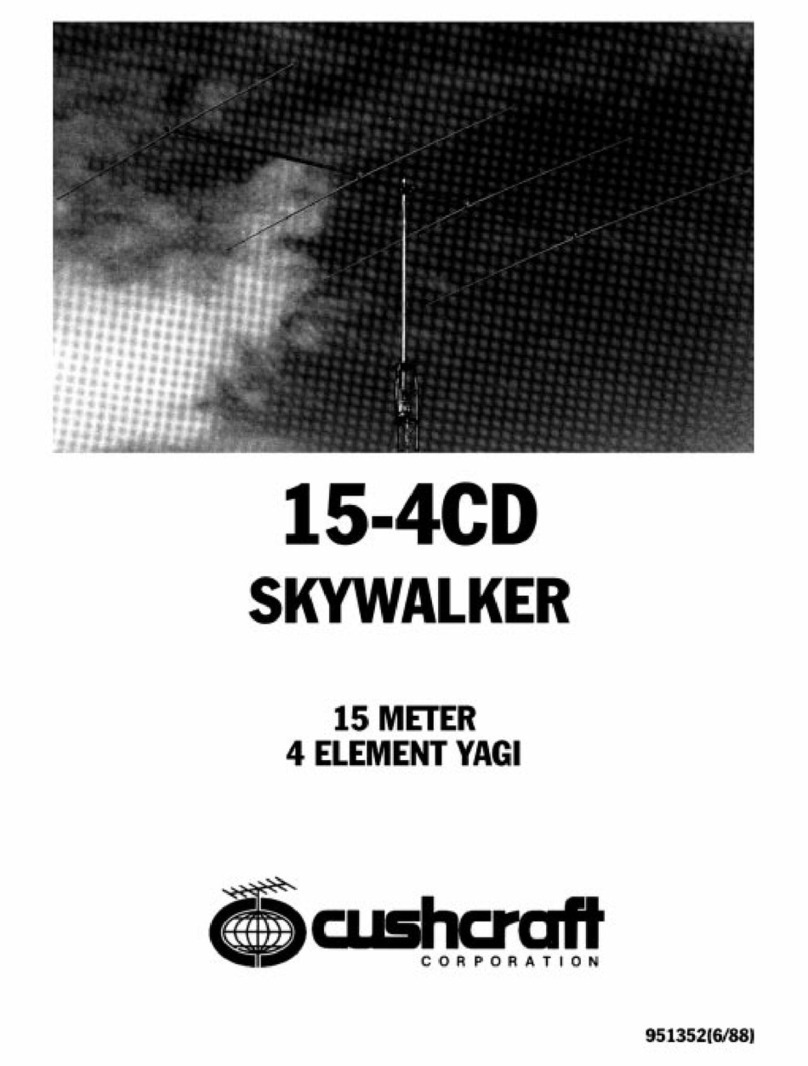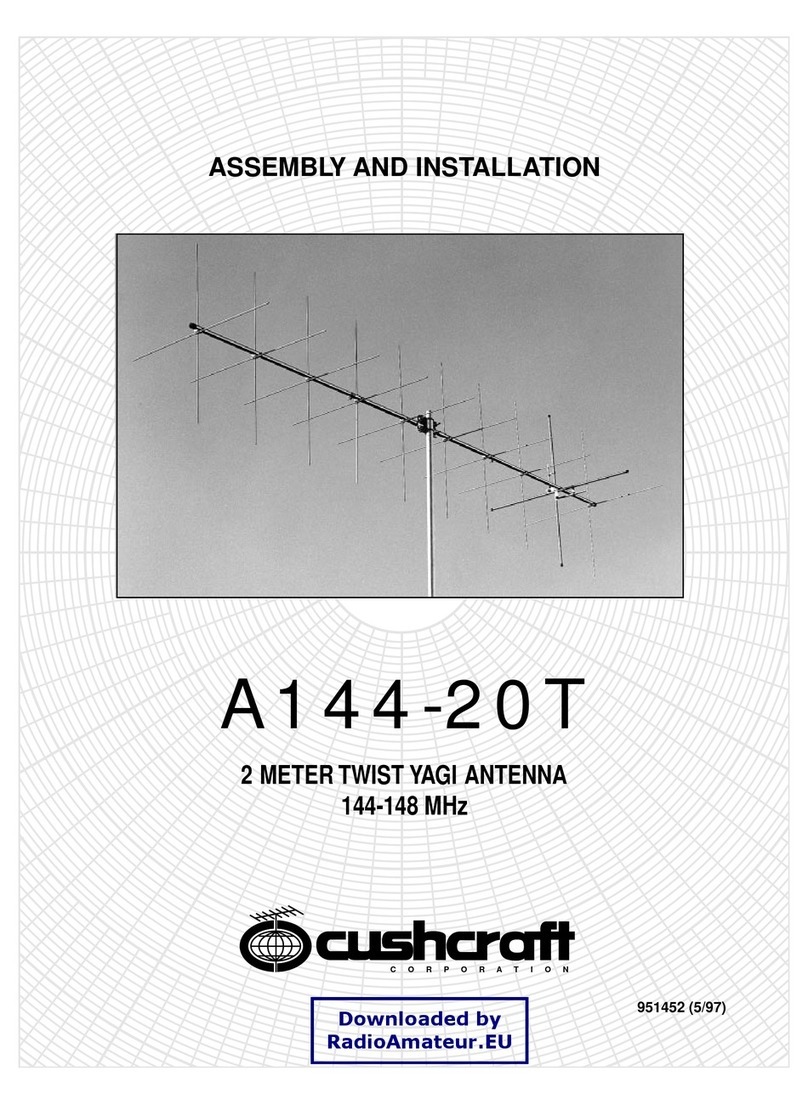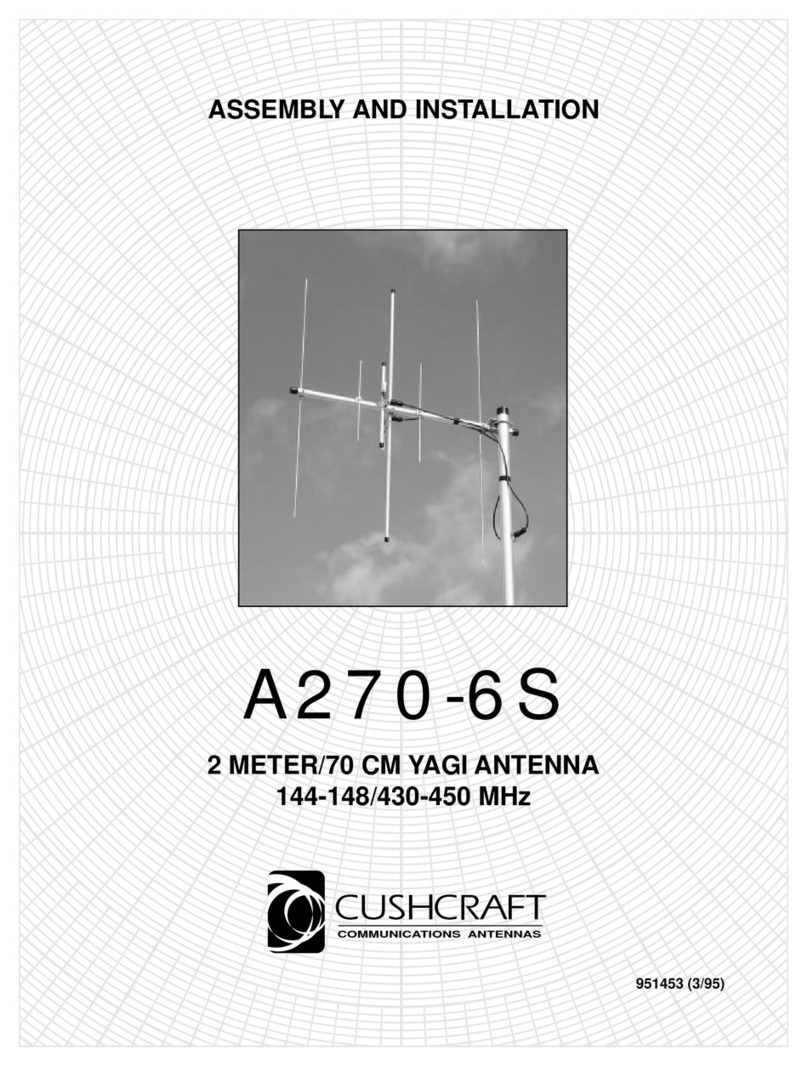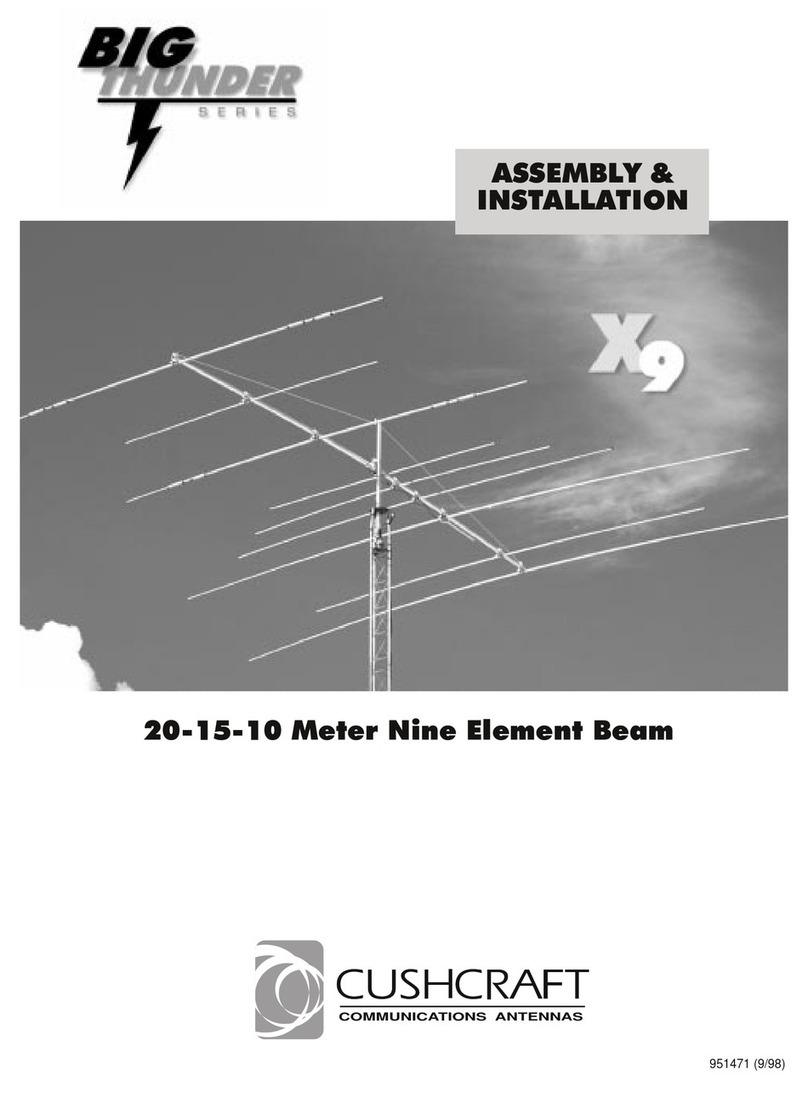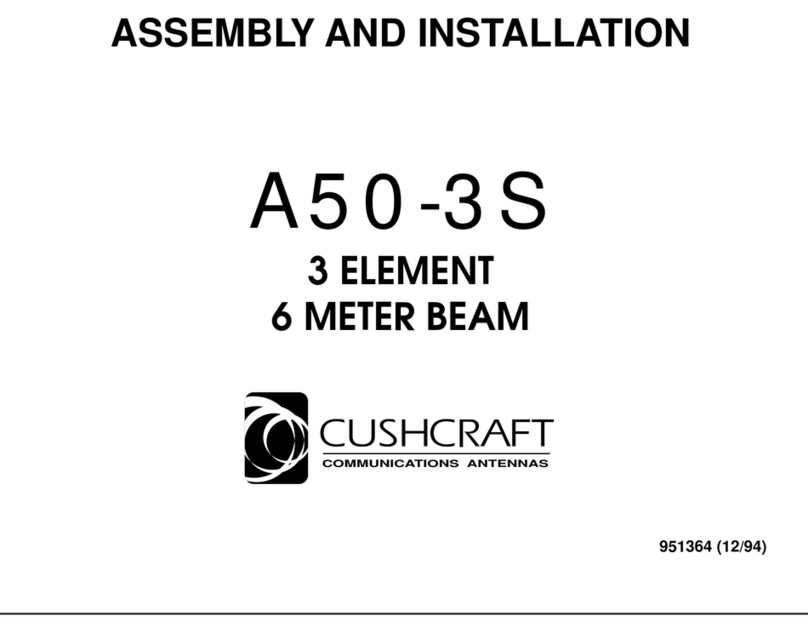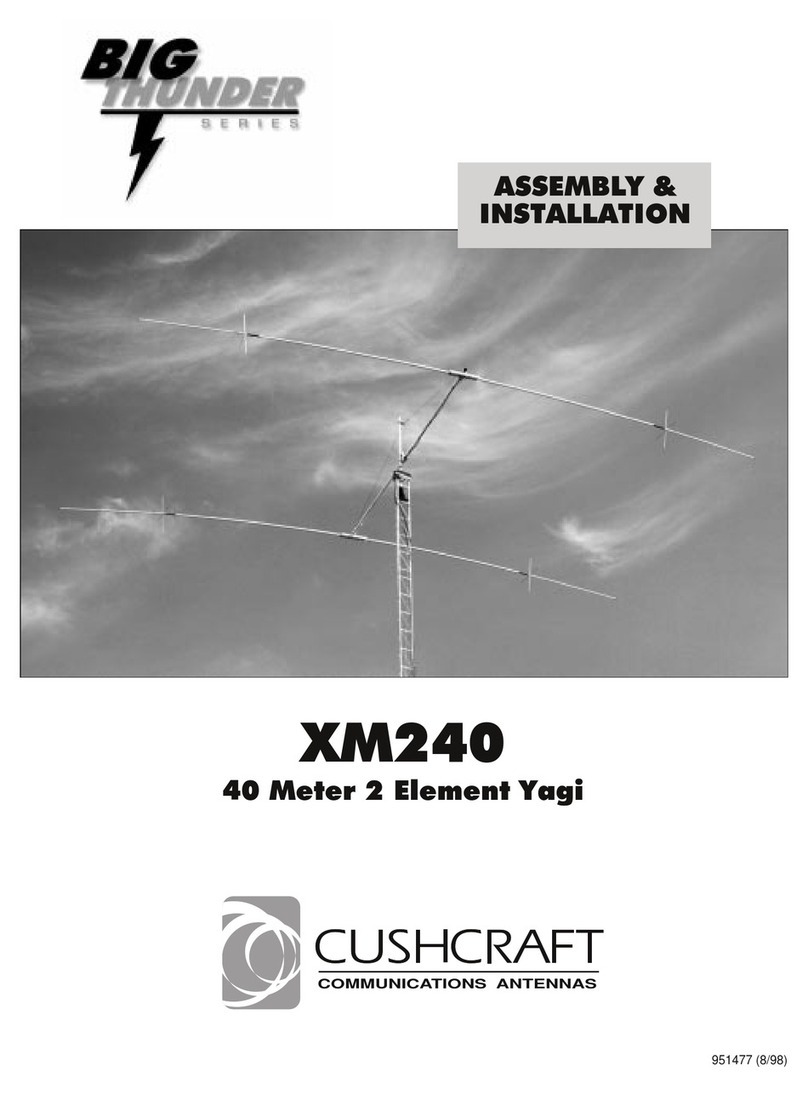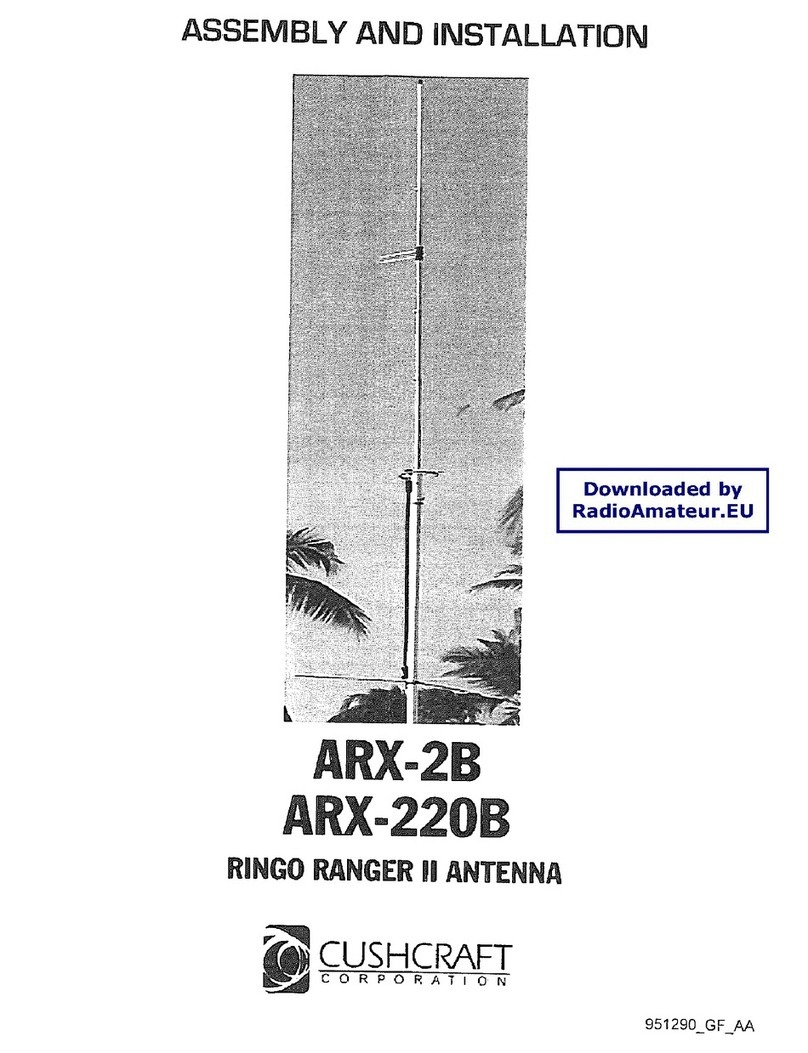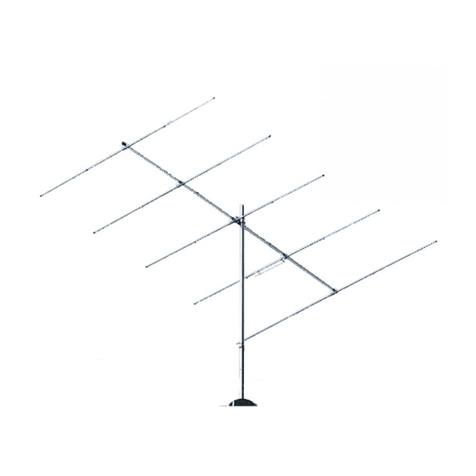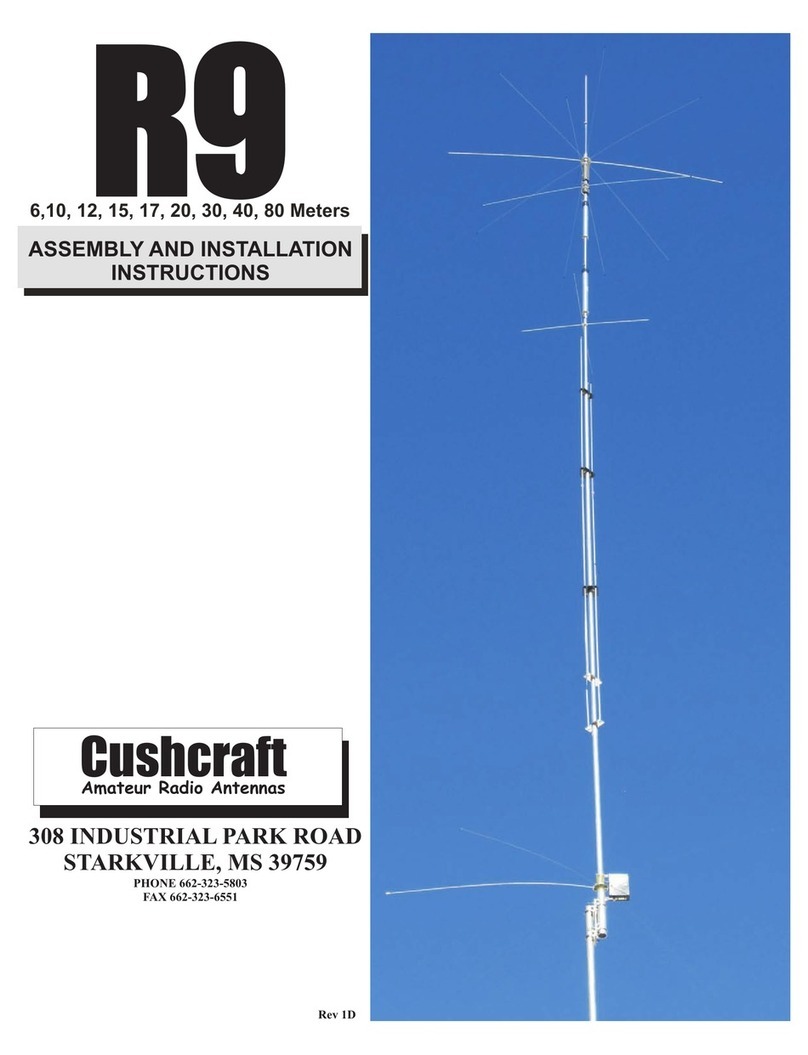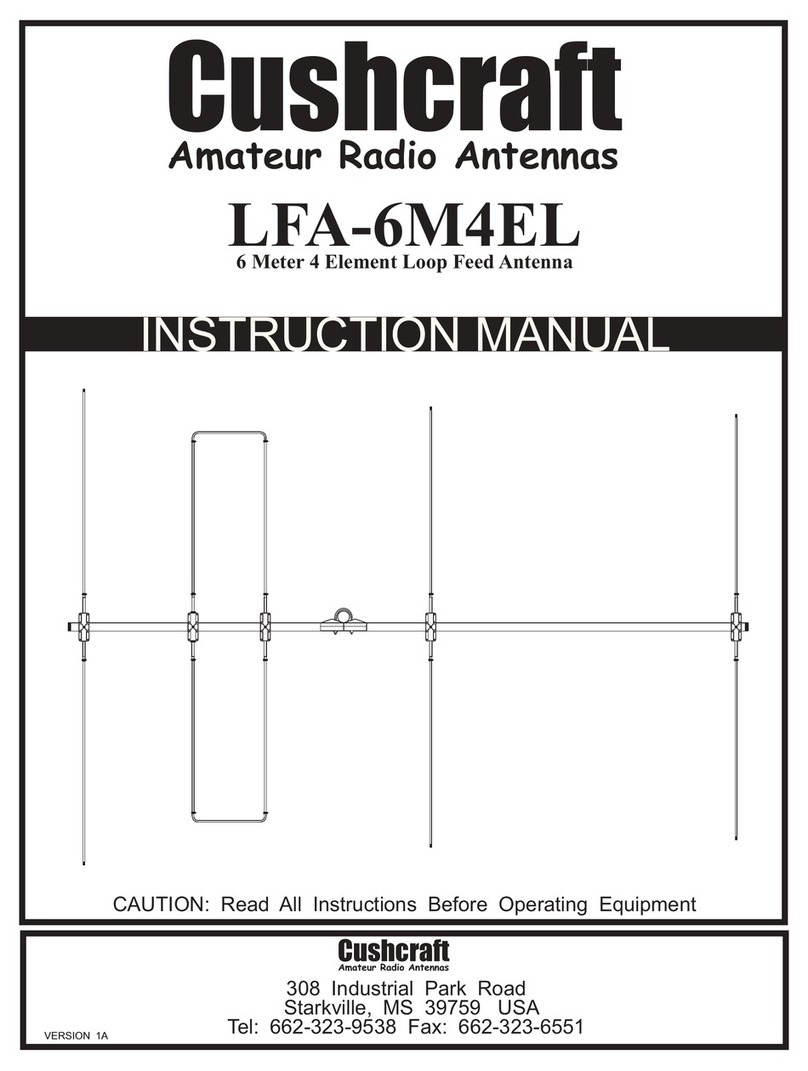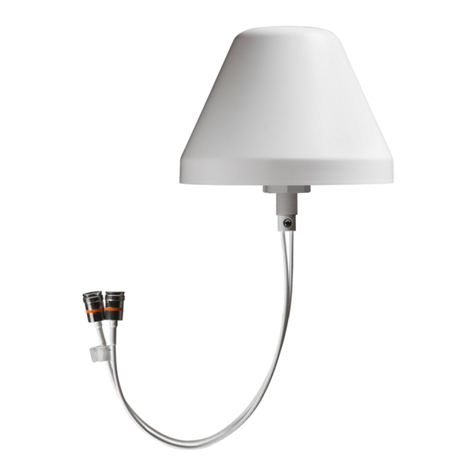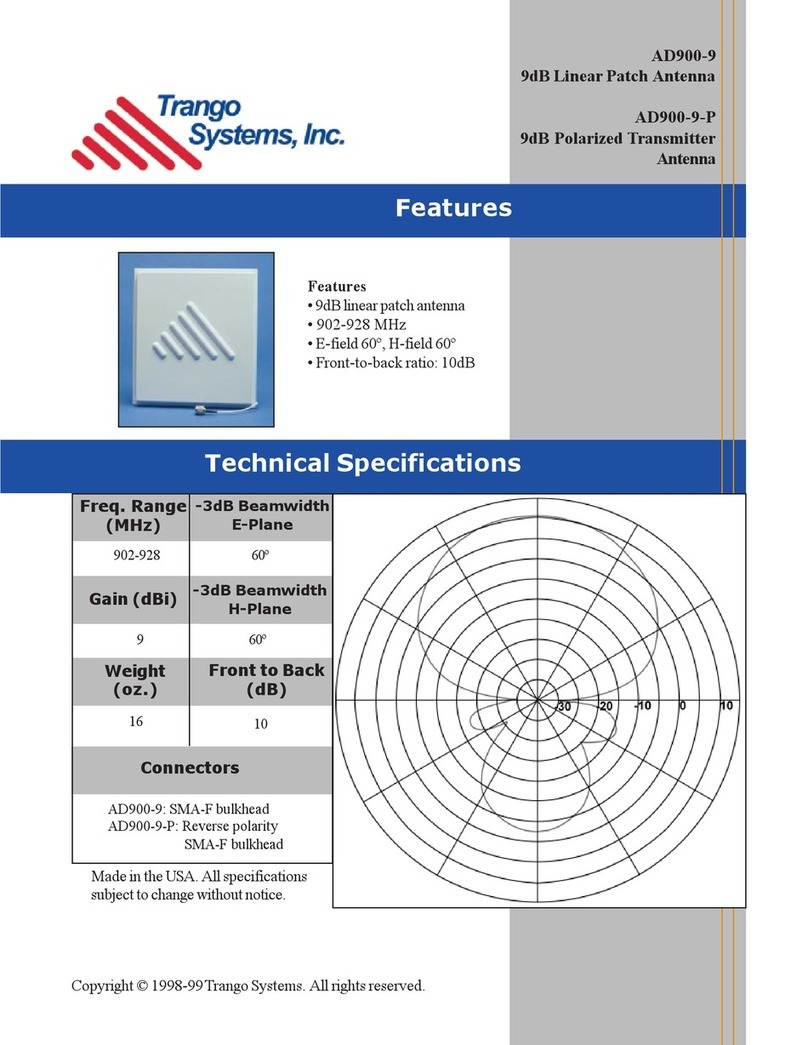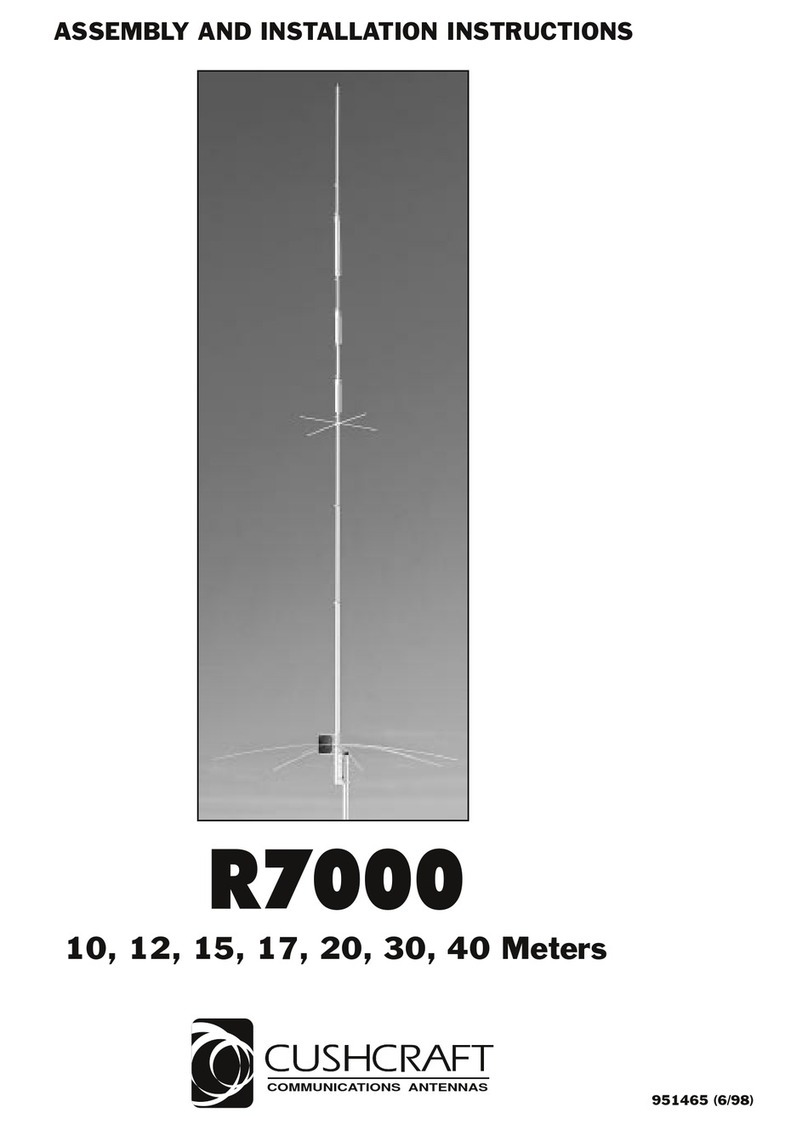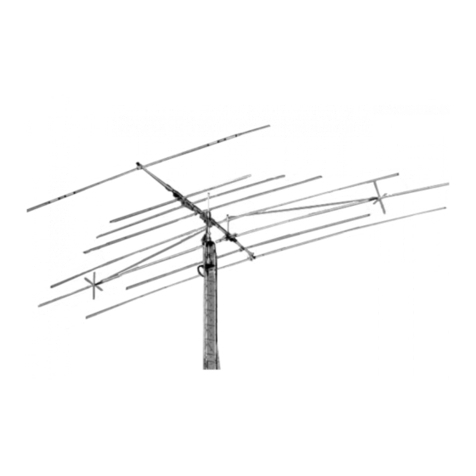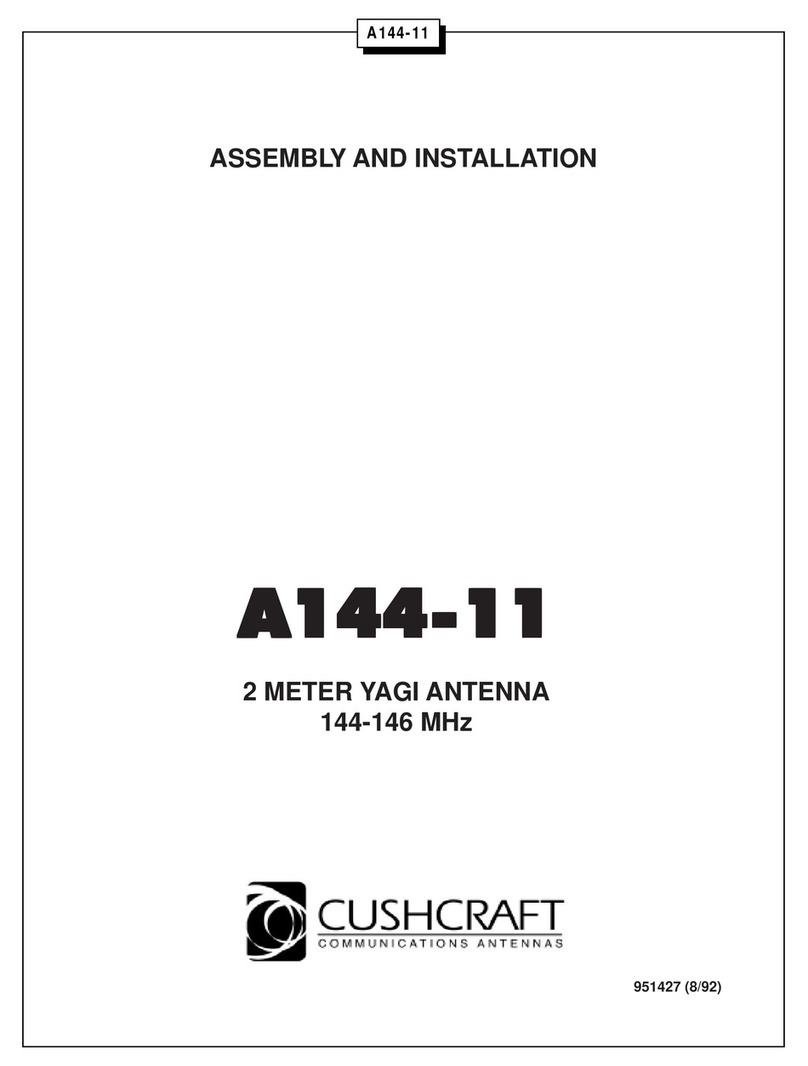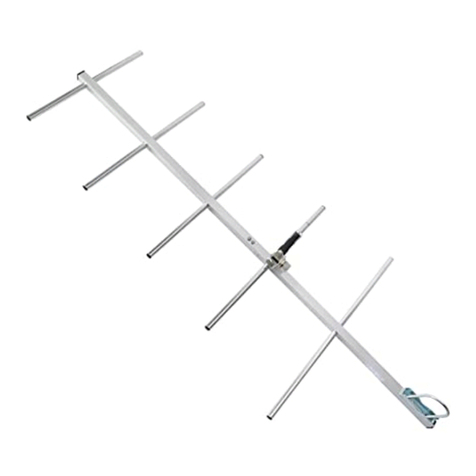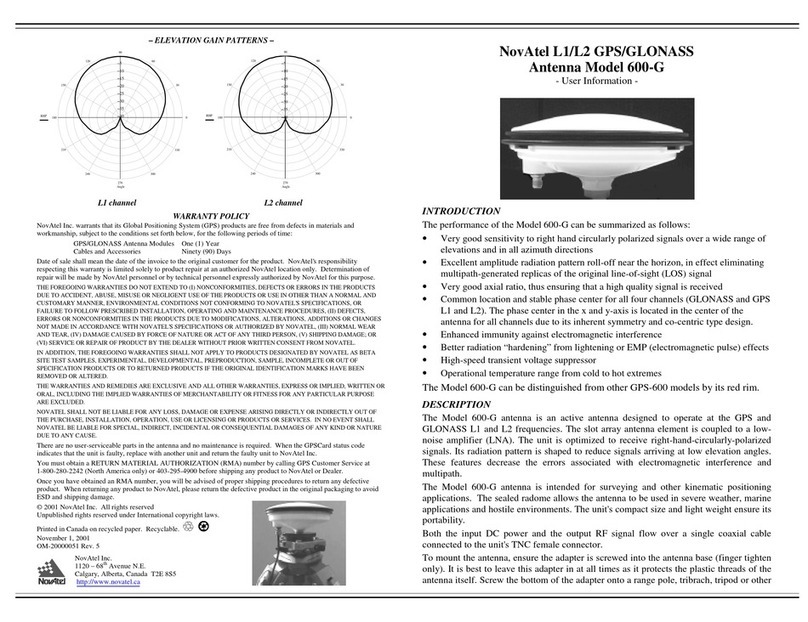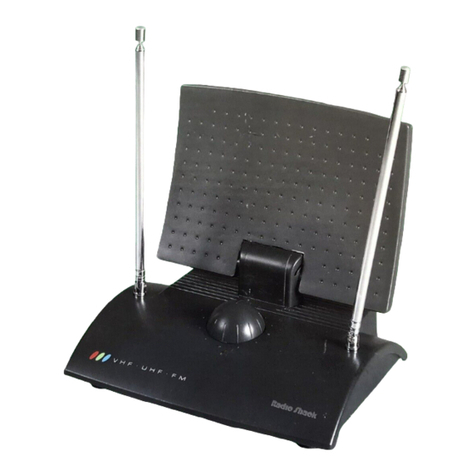
17B.2
WARNING
THIS ANTENNA IS AN ELECTRICAL CONDUCTOB. CONTACTWITH POWER LINES CAN RESULTIN DEATH, OR SERIOUS INJURY.
DO NOT INSTALLTHIS ANTENNA WHERE THERE IS ANY POSSIBILITY OF CONTACT WITH OR HIGH VOLTAGE ARC.OVER FROM
POWER CABLES OR SERVICE DROPS TO BUILDINGS. THE ANTENNA, SUPPORTING MAST AN D/OR TOWE R MUST NOT BE CLOSE
TO ANY POWER LINES DURING INSTALLATION, REMOVAL OR IN THE EVENT PART OF THE SYSTEM SHOULD ACCIDENTALLY
FALL. FOLLOWTHE GUIDELINES FOR ANTENNA INSTALLATIONS RECOMIVENDED BY THE U.S. CONSUMER PRODUCTSAFEW
COMI/IISSION AND LISTED IN THE ENCLOSED PAMPHLET,
Your Cushcralt l7B2 Boomer antenna is designed and manufactured to giw fouble lrss ssrvice. This anbnna will perform as sp€cified if the
instructions and suggesùons in fris manual are followgd and care is used in the assembly and installation. When checking the components received
in your ântenna pâckâge use the parts listsd b€side each diagram. There is a master parts list on page 7. lf you are unable to locate any tube or
component, check the inside ol all tubing. IMPORTANT: Save the weight labellrcn he outside ol the catton. Eæh antenna is webhed atthe factoty
to verify the pafts count. ll you claim a missing paft, you will be asked lor the weight wrilicalon label.
PLANNING
Plan your installâtjon carefully. lf you use volunteer helpers be sure that they are qualified to assist you. Maks csrlain that everyone involved
underslands that you are in charge and that they must follow your instructions. lf you have any doubts at all, employ a professional antenna
installation company to install your antenna.
LOCATION
Location of the antenna is very important. Sunounding objects such as trees, power lines, other antennas, etc. will seriously reducs efficiercy. To
minimize the effr-.cts ot sunounding objects, mount the antenna as high and in the clear as possible. lf metal guy wires are used, they should bs
broken with strain insulators. EXTREME CARE MUST BE USED FOR YOUR SAFETY. YOU MUST INSURE THAT WHILE THE l7B2 lS lN
OPEMTION NEITHER PEOPLE OR PETS CAN COME IN CONTACT WTH ANY PORTION OF YOUR ANTENNA, DEADLY VOLTAGES AND
CURRENTS IVAY EXIST. ALSO, SINCE THE EFFECTS OF EXPOSURE TO RF FIELDS ARE NOT FULLY UNDERSTOOD, LONG TERM
EXPOSURE TO INTENSE RF FIELDS IS NOT RECOMMENDED, THEBE IS A WARNING SÏICKER WHICH MUST BE ATTACHED TO THE
BOOM AS SHOWN IN FIGURE E.
MOUNTING
The mast mounl bracket will accommodat€ up to a 2' (5.1 cm) mast. A I - 1/2" OD (3.S cm) or larger heavy wall tubing mast should bs used. A good
heaw duty antenna rotâtor will p.ovide the best servics and longgst life. Often it is desirable to mount several antennas on one mast. To keep
possible interaction to a minimum, place your antennas as fâr apart as you can.
SYSTEM GROUNDING
Direct grounding of the antsnna, mast and tower is very important. This serves as protection from lightning strikss and static buildup, and lrom high
vollage which is present in the radio equipment connected to the antenna. A good electrical connection should be made to one or mors ground rods
(or other extensive ground sysùem) dir€ctly at the base ol the tower or mast, using at least #10AWG ground wire and non-corrosive hardware. For
details and safety standards, consult the National Electrical Code. You should also use a coaxial lightning arrester. Cushcraft offers several diltsrgnt
models, such as LAC-1, LAC-2 and he LAC-4 series
ASSEMBLY
Assemble your antenna by following the direclions and illustrations in steps 1 through 7. Atter ihe antenna is completely assembled, \,erify
dimensions and €lement spacings for accuracy. Then, return to the section below for final tuning.
TUNING PROCEDURE
The 1 782 does not normally requke tuning after assembly. However, il you wish to check he VSWR betore installation, please obsen/€ the following
procedures. To prevent detuning the antenna, it should be tuned in place or at least 7 feet (2.13 meters) above ground and clear ol surrounding
objects. Keep all meial obstructions such as guy wires and other antennas at least 10 feet (3.05 m) away since they will nullily any âdjusùnent and
degraded performance will result-
Run the coax cable from your transmittêr to the area in which the antenna is going to be tested. The length of lhis cable or your leedline is not critical.
Connect a good quality VHF VSWR bridge to the end of this cable. Connect a short length of cable [20 tt (610 cm] or lessl from the VSWR bridge to
the antenna. Set the trânsmitter to your center operating frequency. When you read VSWR, be sure you move far enough away from the antenna so
that your body does not etfect the reading.
Measure ths VSWR. lf it is too high, move both T-Maich strâps (1 25) by 1/4' (.6 cm) either inward or outward and check the VSWR. Both T-ttatch
sùaps should be the same dislanæ lrcm lhe centet ol the d ven elemerL lt the VSWR improved, tren continue moving the T-Match skâps in the
same direction. lf the VSWR deteriorated then move the T-Match strâps in the opposite direction. Repeat this procedure until no turther
improvement can be made. You have matched your antenna. Then tighten all connections gn the T-Match driven el€ment assembly. Tape 6s
leedline to the boom and mast as shown in figure l.
